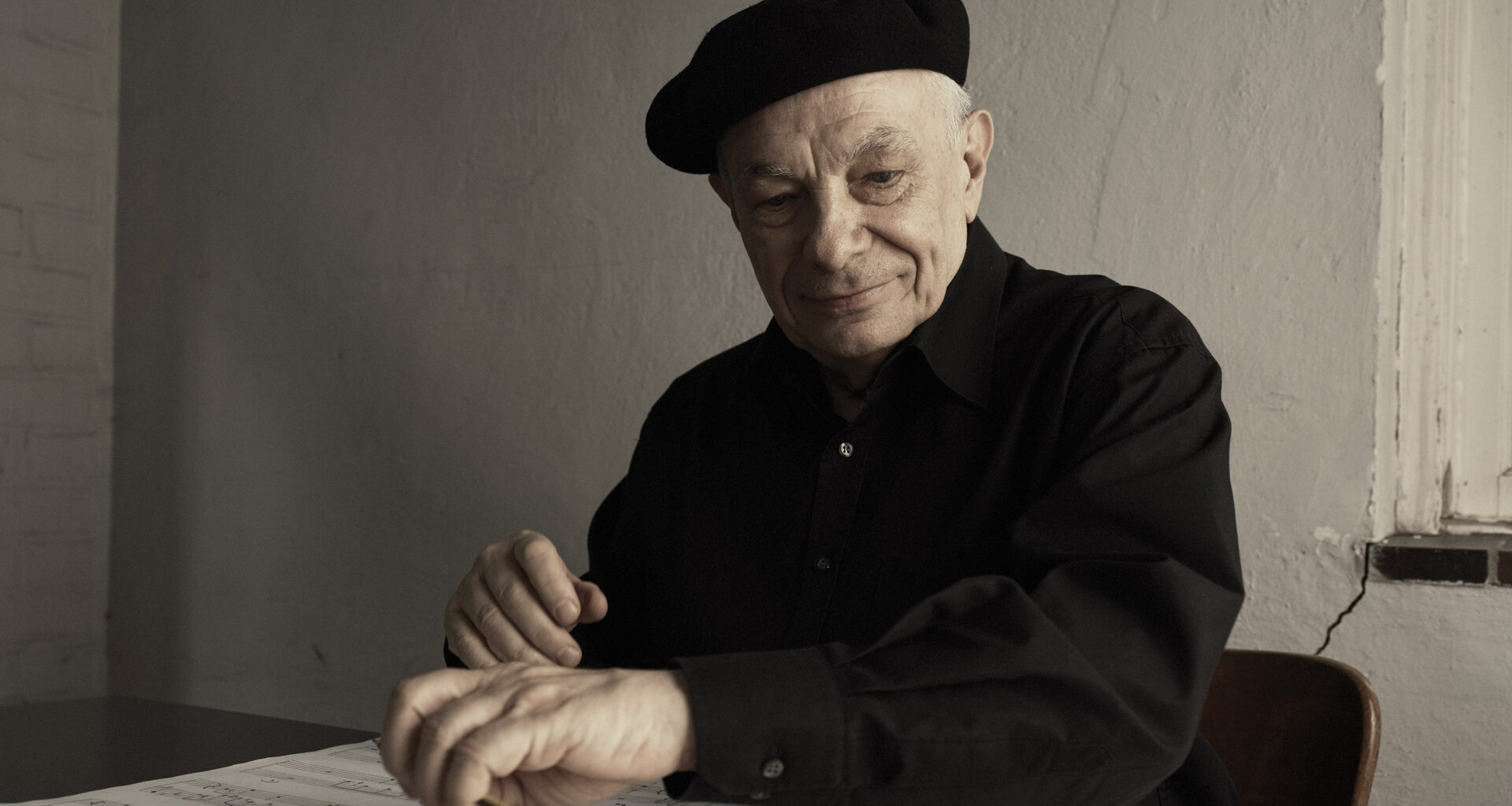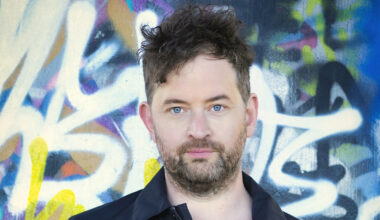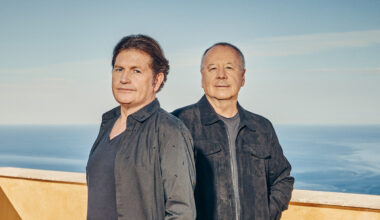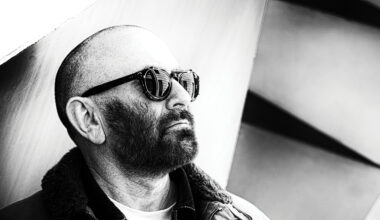Karl Bartos discusses his soundtrack for the expressionist shocker ‘The Cabinet Of Dr Caligari’, a film set in the 19th century, first released in 1920, and now reissued more than 100 years later
In the 11 years since Karl Bartos released his last solo album, ‘Off The Record’, the former Kraftwerker has been occupied with two time-consuming projects – his chunky autobiography, ‘Sound Of The Machine: My Life In Kraftwerk And Beyond’, and composing a new soundtrack for a revamped version of what is considered the quintessential work of German expressionist cinema, the 104-year-old ‘The Cabinet Of Dr Caligari’, both of which are being released this month.
The film is a psychological horror story which takes place in a hallucinogenic world of distorted images, featuring a perspective-wrecking set design filled with absurdly outsized furniture, fixtures and fittings, and even more peculiar characters. The protagonist is Francis, who finds himself drawn into the bizarre world of the mysterious hypnotist and funfair showman Dr Caligari and his captive somnambulist Cesare, as he investigates the murder of his friend Alan. It’s quite the shocker.
With its themes of madness and homicide and the utterly disorienting visual style, not to mention its profound weirdness and sheer age, ‘The Cabinet Of Dr Caligari’ is not exactly a staple of the Netflix era, but it looms large in the history of global cinema. Its place in German culture is particularly significant, an example of just how sophisticated cinema in the Weimar period had become before Hitler and his thuggish philistines destroyed German art. In an interview that Karl gave to a German newspaper about the project, ‘Caligari’ was described as “the Big Bang of pop culture”.
“It’s very important for our German nation,” explains Karl. “Just before the First World War, there was the beginning of this new medium. One film which was very popular was ‘The Student Of Prague’. It’s a very clever work, where a character steps out of a mirror. People were just captivated and hypnotised by it. The two writers of ‘The Cabinet Of Dr Caligari’ both saw it.
“Then the First World War came along. This was the starting point of where everything went wrong – this very bad, dark development in Germany. Both writers went to war and came back traumatised. They wanted to go into the film industry, and so came up with the idea for ‘The Cabinet Of Dr Caligari’.”
The two writers, Hans Janowitz and Carl Mayer, met in Berlin after the war and initially developed the project with Fritz Lang, who would later direct ‘Metropolis’ in 1927. In the end, it was directed by Robert Wiene, who wrote and directed dozens of films in Germany until his death in 1938. Through the characters of Caligari and Cesare, Janowitz and Mayer explored ideas of authoritarianism and control, using trance and sleepwalking as metaphors for how nations, especially their own, could be urged to kill by deranged leaders. It makes for chilling viewing in the light of what was to come next for the traumatised German nation.
Fifty years later, in the iconic Düsseldorf electronic music studio they called Kling Klang, ‘The Cabinet Of Dr Caligari’ became a touchstone for the members of Kraftwerk – and especially Karl Bartos – as the band sought out inspiration for their recasting of contemporary German culture in the mid-1970s.
It wouldn’t have been lost on Karl and his colleagues that they were working in the very same city that in 1937 had hosted Josef Goebbels’ and Adolf Ziegler’s Degenerate Art exhibition – a selection of modern artworks taken from the many thousands confiscated by the fascist regime for being “an insult to German feeling”. And if ever there was a piece the Nazis would deem degenerate, it was ‘The Cabinet Of Dr Caligari’.
Its outrageously inventive visual style, reflecting the distortions of the disturbed minds of its protagonists and the themes of obsession, control and murder, were both repulsive and far too close to home for the stunted Nazi mind.
For Karl, ‘The Cabinet Of Dr Caligari’ first came into his orbit when Kraftwerk were working on the track ‘Metropolis’.
“It was 1977, before we had written ‘The Man-Machine’,” he says. “I hadn’t seen ‘Metropolis’, but we saw photos and we knew the storyline that a professor builds a robot and gives it the face of Maria, and that it was about the fight between man and machine. This is where the title ‘The Man-Machine’ comes from.”
Ever the intellectual and cultured young men, Kraftwerk’s interest in ‘Metropolis’ led to Karl reading more widely around Weimar cinema.
“There was one line I always remembered regarding ‘Caligari’,“ he says. “‘The new medium, film, combines the expressionist’s world view with psychoanalysis and the mystical ghost world of romanticism.’ And that was the door through which I got into the ‘Caligari’ world.”
Today, if we want to check out some old piece of cinematic history, the chances are it will either be on a streaming service somewhere or on YouTube. But in those far-off days before the advent of the internet, you had to wait for your local arthouse cinema to show it or for it to pop up on TV. Neither of which was likely with a silent motion picture from 1920, when prints were often lost or damaged.
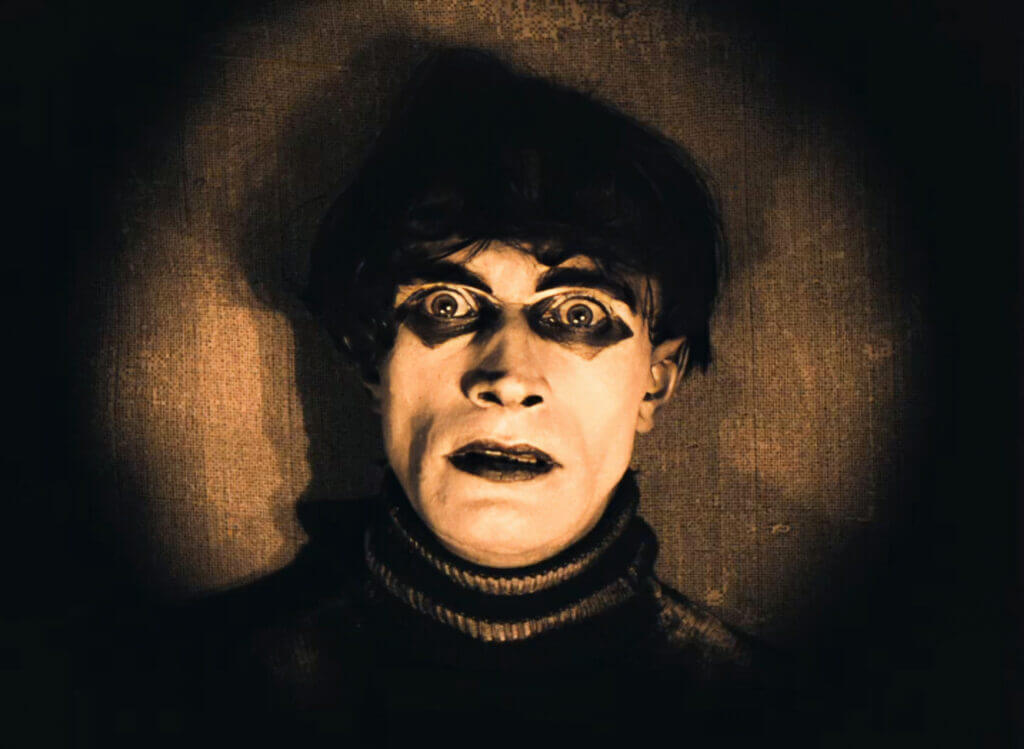
And so ‘The Cabinet Of Dr Caligari’ was a work with a huge cultural footprint, extensively written about by academics and film historians, but one that few people had ever actually seen. Its scarcity only intensified Karl’s interest in it, which he describes as an addiction.
“I approached it through books and pictures. It took a long time before I saw it – not until 2005. But the idea of putting this project together had been growing for a long time. I must confess that I didn’t understand the movie so well. I got a VHS copy of it, and it was very dark and bad quality. But I was able to put the film in the computer and improvise to it.”
He learned more about it from media professors when he was teaching at Berlin University of the Arts between 2004 and 2009, where he co-founded and taught a course called Sound Studies – Acoustic Communication. In 2014, ‘Caligari’ was restored by the Friedrich Wilhelm Murnau Foundation, which finally gave Karl the most complete and clean version of the film to work with, and a reason to rescore it.
The new soundtrack isn’t just a series of music cues. It’s alive with sound design – muffled voices, footsteps, party blowers, the sounds of the crowds bustling around the funfair. And the score itself has a narrative of its own. Like the classical tradition which underpins Karl’s work, thanks to his years of formal training at the Robert Schumann Hochschule in Düsseldorf, the choice of instrumentation and the musical themes support and emphasise the story unfolding on the screen in front of your eyes.
“I was sneaking into Francis’ mind,” says Karl. “The guy who tells the story is mentally disturbed. I had to come up with a sound which yields to it, but on the other hand I wanted to draw people into the middle of the movie. I wanted to take them by the hand and put them in the situation. Let me take you down, because I’m going to… Caligari’s world. This strange world where nothing is real.”
Karl making reference to The Beatles’ ‘Strawberry Fields Forever’ here isn’t accidental – he’s a big Beatles fan. The opening chord of ‘A Hard Day’s Night’ back in 1964 was the starting pistol which set him off on his musical life. At times, his compositions for ‘The Cabinet Of Dr Caligari’ take on the trippy hues of ‘Being For The Benefit Of Mr Kite’, from the ‘Sgt Pepper’ album. It’s the ideal sound for the psychedelic funfair scenes, where milling crowds of revellers give money to a monkey before entering the hallucinatory world of the fair and its freakish sideshows.
Anyone who has endured Giorgio Moroder’s 1984 soundtrack to Fritz Lang’s ‘Metropolis’, the other legendary movie of the Weimar era, might balk at the idea of a pop music score for ‘The Cabinet Of Dr Caligari’. And Karl did reject his first forays, where he started creating what he calls “pop music” for the film.
“Like my former band, perhaps…” he says.
As enticing as that sounds, it didn’t suit for a work spanning the 19th, 20th and 21st centuries.
“I knew I had to find a sound that would be able to combine all of the periods of time,” notes Karl. “I was thinking about a symphony orchestra, but I knew it needed to be a transformed symphony orchestra, a bit like what Wendy Carlos did with ‘A Clockwork Orange’. So with this, it is sort of like a symphonic orchestra, but transformed, twisted.”
As Karl told me when we discussed his autobiography in 2022, “I always like to go back into the history of music, take a little bit from here and there, and I go back to the time when Bach lived, the age of enlightenment…”
The most critical device he’s employed to achieve what he was looking for is the jarring swirl of obviously synthetic strings. They unapologetically drive the main theme, interspersed with Gothic organ. It’s a haunting and unforgettable opening, and not a million miles from Kraftwerk’s canny use of shonky sounds, like the Vako Orchestron they employed for choir and strings on both ‘Radio-Activity’ and ‘Trans-Europe Express’.
The sounds Karl uses for ‘The Cabinet Of Dr Caligari’ evoke classical music and modernity, but at the same time create a queasiness in the listener, setting us up for what is a whole hour in the company of a madman, raving with serious serial-killer energy.
“You see the Polymoog over there?” he says, indicating the legendary polyphonic beast behind him. “That plays a big role. It’s all in there. I used the Akai sample library, the Vienna library. It’s all wrapped into one. It’s the idea of an orchestra. There are 18 musicians playing, and they are having a conversation. One instrument talks to another instrument, and a third instrument gives a comment, and the percussion plays an accent. Boom! But in the end, everyone is speaking with one voice, and this is the concept behind my twisted symphonic orchestra.”
It is brilliantly executed. You can never be quite sure of where the artificial ends and the authentic begins. Suspenseful minor key arpeggios in the first scenes set up the story, then synthesisers breathe ghostly and airy textures, raising tension, while Caligari hawking his sideshow is accompanied by frankly gruesome melodies composed in an odd time signature which serves to destabilise the viewer.
Leitmotifs, like the almost comical tootling, soundtrack Dr Caligari’s scheming and gurning, which turn darker and increasingly unsettling as the story unfolds. By contrast, a gentle, romantic piano theme underpins the scene where we are introduced to Jane, the mutual love interest of Alan and Francis. The sound design, which punctuates throughout, brings the film into a three-dimensional world. These snatches of diegetic sound were also inspired by Karl’s reading about the making of the movie.
“It was filmed in the winter of 1919-20 in Berlin, of course,” he says. “They had built a big glass house, because they needed daylight, illumination everywhere. And so they acted in this huge glass house and there was lots of noise going on. Everybody knew about the recording of sound, but they couldn’t manage to put the soundtrack on the celluloid.
“So it was just a very strange situation. The actors were acting, they’re speaking all the time. And you can read the actors’ lips, but the technology wasn’t ready yet to synchronise recorded sound with pictures. So I thought, ‘What would happen if I reconstruct all the sounds?’. It was a nightmare because it took me so long. Every footstep you hear, every heartbeat, almost!”
Along with footsteps and the like, there are voices in the soundtrack – snippets of sentences appear as impressions of human speech rather than anything fully comprehensible. It makes for a vividly dreamlike experience.
“If I dream, what sounds do I hear?” says Karl. “Do I really hear people speaking? I imagined it as a kind of telepathy.”
Having survived for over 100 years, ‘The Cabinet Of Dr Caligari’ remains the ultimate work of celluloid expressionism, and was a major influence for film noir and Gothic horror. And it wasn’t just Kraftwerk who were inspired by it years after its creation.
Killing Joke frontman Jaz Coleman, terrifying audiences in 1980 with his ghoulish make-up and manic persona, was a dead ringer for the tragic figure of Cesare, the death-predicting somnambulist. The outfit that Bowie wore for a shoot with photographer Steve Schapiro in 1975 was inspired by Cesare’s, and he revisited it in the video for 2015’s ‘Lazarus’ – the last single released before his death – where he emerges from and returns to a wardrobe, just as Cesare does with his cabinet.
But the film resonates over a century after it was made not just because of its visual style. The idea of a search for truth in a world gone mad is as urgent today as it was in 1920.
“At first, it seems to be a quest for truth, because the main character is like Sherlock Holmes,” says Karl. “But then you find out he’s crazy. You really don’t know where you are. And that seems to be about the disappearance of reality, which we are facing now. Alternative facts. Nothing is real.”
There he goes, with ‘Strawberry Fields Forever’ again.
“I’ll tell you one thing,” Karl chuckles as we conclude our conversation. “If you read about ‘Caligari’ and if you see the movie with my music, you won’t get rid of it!”
‘The Cabinet Of Dr Caligari’ is out on Bureau B
